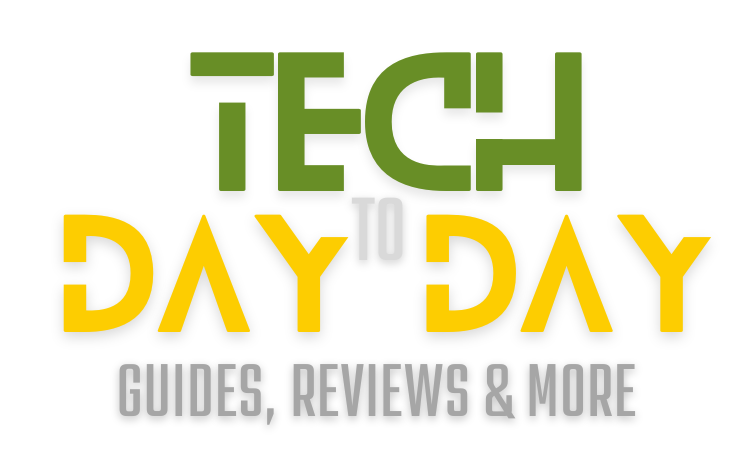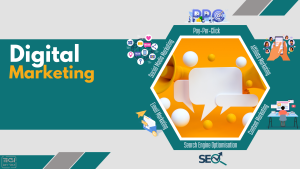Table of Contents
In today’s interconnected world, digital marketing has become an indispensable tool for businesses seeking to reach their audience and drive sales. Gone are the days when traditional marketing channels like TV, newspapers, and billboards were the sole means of communication for companies. With the advent of the internet and digital technologies, businesses are turning to digital marketing to engage with consumers in a more immediate and personalized manner.
But what exactly is digital marketing?
This article aims to provide a comprehensive overview, diving into its various components, strategies, and significance.
Digital marketing is the practice of promoting products, services, or brands through digital channels. These channels can range from search engines and social media platforms to email and mobile apps. The main objective is to connect with a targeted audience, build brand awareness, and ultimately drive sales or other desired actions.
Why is Digital Marketing Important?
Reach a Wider Audience
The internet has a global reach. Digital marketing allows businesses to tap into this extensive network and reach audiences far beyond their geographical location.
Cost-Efficiency
Compared to traditional marketing channels, digital marketing is often more cost-effective, allowing smaller businesses to compete with larger players.
Measure and Analyze
Digital marketing tools enable real-time tracking and analytics, helping businesses understand what’s working and what isn’t, so they can adjust their strategies accordingly.
Personalization
Data-driven strategies allow for personalized marketing, making it easier to target specific groups with tailored messages.
Components of Digital Marketing
Search Engine Optimization (SEO)
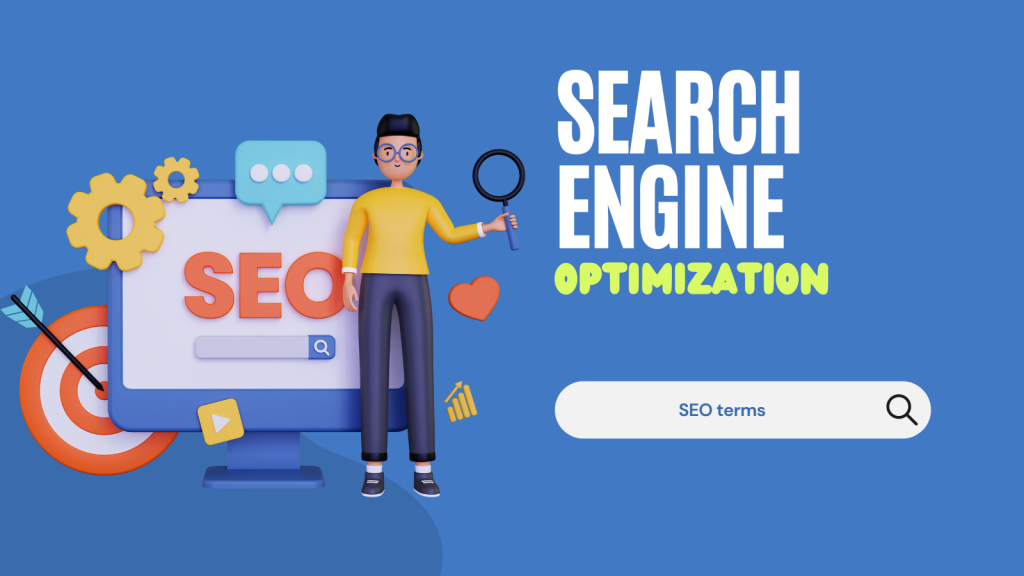
Search Engine Optimization (SEO) is the backbone of digital visibility. It involves improving a website’s visibility on (non-paid) search engine results pages (SERPs). The primary objective is to boost organic traffic, which are visits that come from unpaid search engine results.
Key Aspects:
- Keyword Research: Identifying relevant and high-volume keywords for your niche. It’s not just about integrating the right keywords but understanding the user’s intent behind those keywords. Google’s algorithms prioritize websites that provide value and answer users’ queries effectively.
- On-Page SEO: Dealing with elements on your website, from the integration of target keywords in content and meta tags to the use of clean URLs and optimized images. It is to optimize individual webpages with meta descriptions, title tags, and high-quality content.
- Off-Page SEO: Focuses on building high-quality backlinks from other reputable websites to improve your website’s authority. This is akin to a vote of confidence from other websites, signaling to search engines that your content is valuable.
- Technical SEO: Ensuring a website is technically equipped to meet search engine guidelines, that the search engines can easily crawl and index your site, emphasizing aspects like XML sitemaps, structured data, and website speed (faster loading) and mobile compatibility.
Importance:
Highly optimized websites are more likely to appear on the first page of search engine results, which is crucial for attracting organic traffic.
Content Marketing

Content is king in the digital realm. It involves creating and sharing relevant, valuable content to attract and engage a targeted audience. It serves multiple purposes: educating readers, establishing authority, and serving SEO. Elements to master:
Key Aspects:
- Audience Research: It’s vital to pinpoint the challenges and informational needs of your target audience to create content that resonates and provides value.
- Content Strategy: Planning the types of content you will create, such as blog posts, videos, and podcasts. Planning content ahead of time ensures consistency and relevance.
- Content Creation: Producing high-quality material that provides value to your audience.
- Content Distribution: Sharing the content through various platforms and channels. From blog posts and infographics to podcasts and webinars, diversifying content can cater to different audience preferences.
- Formats: Blogs, ebooks, podcasts, videos, webinars, infographics.
Importance:
Quality content establishes brand authority, fosters trust, and engages the audience, leading to higher conversion rates.
Email Marketing
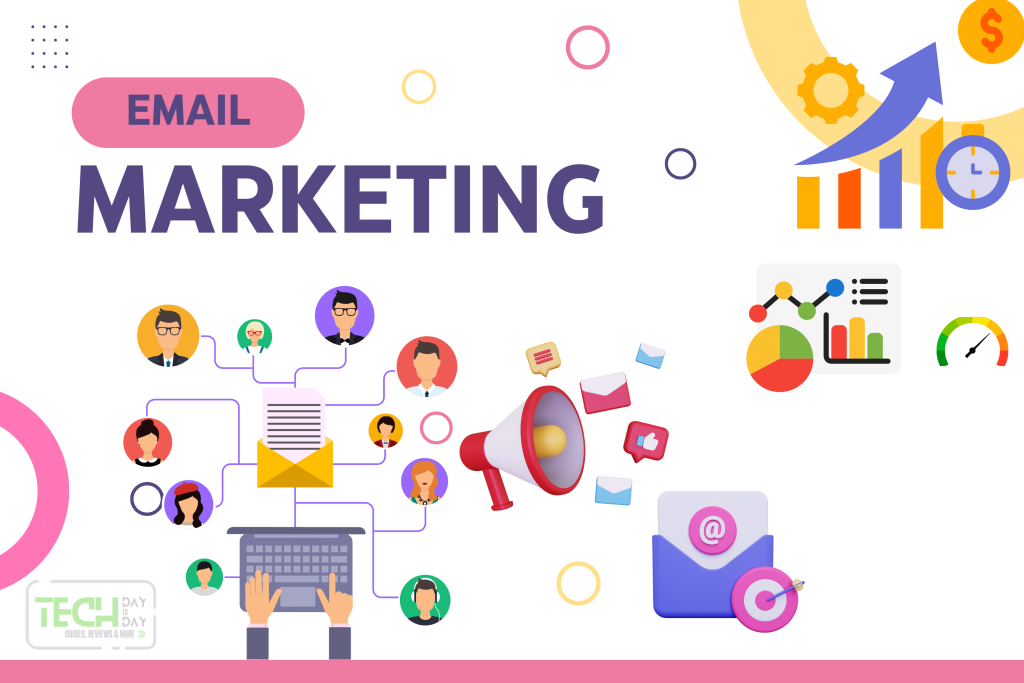
One of the most effective channels in terms of ROI, email marketing is personal, direct, and flexible. This is the practice of sending targeted and personalized emails to a subscriber list. Email marketing is highly effective for lead generation, customer retention, and direct sales.
Key Aspects:
- List Building: Gathering email addresses from potential customers.
- Segmentation: Grouping your subscribers based on behavior or demographics can help tailor content more effectively.
- Email Campaigns: Creating and sending sequences of emails designed to engage and convert.
- Design & Content: An attractive design coupled with concise, engaging content enhances user engagement.
- Analytics: Tracking key metrics like open rates, click-through rates, and conversion rates.
- Automation: Tools that trigger emails based on certain user actions can enhance conversions.
Importance:
Email marketing has one of the highest ROIs among all digital marketing channels and is excellent for customer retention and direct sales.
Social Media Marketing

SMM is the voice of your brand. This involves promoting your brand and content on social media platforms like Facebook, Instagram, Twitter, and LinkedIn to generate traffic, increase brand awareness, and drive sales.
Key Aspects:
- Platform Mastery: Each platform, whether it’s Instagram, LinkedIn, or TikTok, has its unique audience and requires a tailored approach.
- Content Planning: Developing a content calendar and strategy.
- Engagement: It’s not just about posting content but engaging with your audience through comments, polls, and direct messages.
- Analytics: Monitoring metrics like engagement rate, reach, and conversions helps refine strategies.
- Advertising: Using paid ads to reach a wider audience.
- Platforms: Facebook, Instagram, Twitter, LinkedIn, Pinterest, Snapchat, TikTok, and more.
Importance:
Social media provides a platform to build brand awareness, develop customer relationships, and drive sales.
Pay-Per-Click (PPC)

PPC is the fast track to visibility on search engines. PPC involves running ads on platforms like Google Ads or Bing Ads and paying a fee each time the ad is clicked. This is a way to buy visits to your site, rather than earning them organically through SEO. While SEO efforts might take months to yield results, a well-optimized PPC campaign can place you at the top instantly.
Key Aspects:
- Keyword Bidding: Selecting and bidding on keywords where you want your ads to appear.
- Keyword Relevance: Crafting relevant PPC keyword lists, tight keyword groups, and proper ad text.
- Ad Creation: Designing compelling and visually appealing ads.
- Landing Page Quality: Directing your PPC traffic to relevant, optimized landing pages with persuasive, clear content and a strong call-to-action.
- Performance Tracking: Monitoring metrics like click-through rates (CTR) and conversions.
- Quality Score: Google’s rating of the quality and relevance of your keywords and PPC ads, impacting your cost per click.
- Platforms: Google AdWords, Bing Ads, and sponsored posts on social platforms.
Importance:
PPC is highly targeted and provides instant visibility, making it ideal for short-term campaigns and new businesses.
Affiliate Marketing
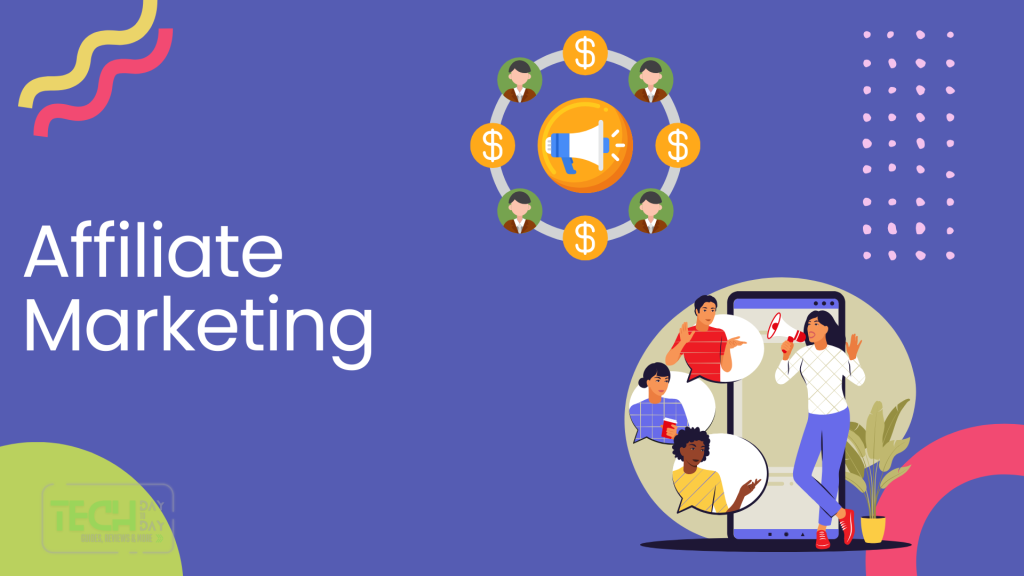
Affiliate marketing involves promoting someone else’s products or services and earning a commission for each sale made through your unique referral link.
Key Aspects:
- Affiliate Programs: Joining affiliate programs related to your industry or niche.
- Promotion: Using your platforms to promote affiliate products, often through unique affiliate links.
- Earnings: You earn a commission for every sale or action made through your referral link.
- Tracking and Analytics: Monitoring traffic, sales, and leads generated through affiliate links.
- Affiliate Support: Providing resources, such as banners or promotional material, to affiliates.
- Examples: Amazon Associates, ShareASale, ClickBank.
Importance:
Affiliate marketing offers a passive income stream and allows you to monetize your content effectively.
Online PR
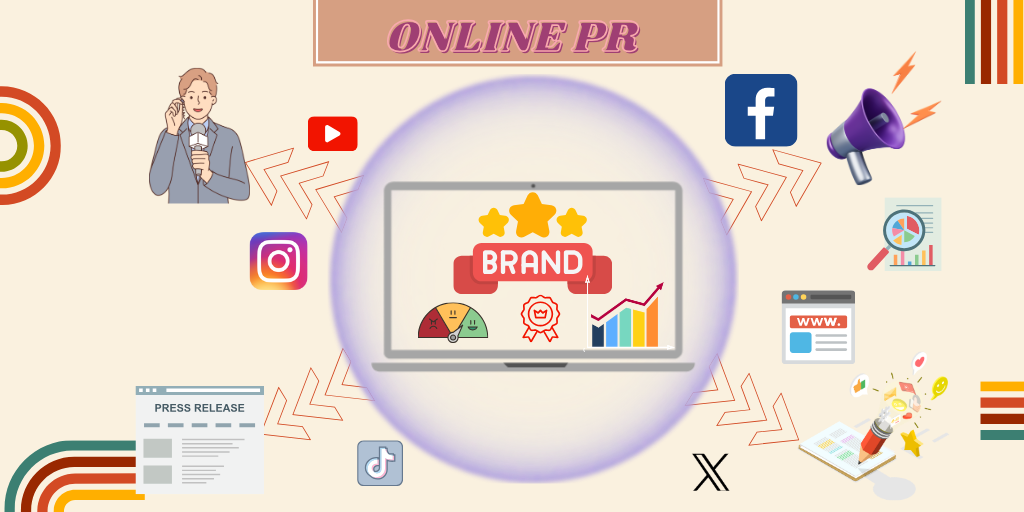
Modern public relations extend beyond traditional media to the digital space. Online PR is the strategic management of a brand’s or individual’s online reputation and relationships with digital media and audiences.
Key Aspects:
- Media Relations: Building relationships with online journalists, bloggers, and influencers.
- Press Releases: Crafting and distributing news or updates about a business to enhance its online visibility.
- Crisis Management: Addressing and managing negative publicity or feedback in real-time.
- Brand Monitoring: Regularly checking online mentions of a brand and its products or services.
Analytics

Analytics deciphers user behavior and campaign performance, guiding all digital marketing strategies. Analytics involves collecting, measuring, and interpreting data from online sources to optimize strategies, understand user behavior, and achieve business goals.
Key Aspects:
- Data Collection: Using tools to gather quantitative and qualitative data about users to understand behaviors and preferences.
- Interpretation: Translating raw data into actionable insights to refine strategies.
- Performance Metrics: Tracking metrics relevant to the set goals, like conversion rates or bounce rates.
- Optimization: Using insights from the data to refine and improve digital marketing strategies.
- KPI Monitoring: Regularly monitoring key performance indicators ensures campaigns are on track and objectives are met.
- Examples: Google Analytics, SEMrush, Hotjar, Mixpanel
Each of these components plays a unique role in a well-rounded digital marketing strategy. By understanding each one deeply, you can better integrate them to create a synergistic and effective digital marketing campaign.
Tools and Platforms
There are various tools and platforms available for digital marketers, such as:
- Google Analytics for tracking website performance
- SEMrush or Ahrefs for SEO
- Mailchimp or ConvertKit for email marketing
- Hootsuite or Buffer for social media management
Digital marketing is an ever-evolving field that leverages digital channels to achieve various business goals, from brand awareness to increased sales. Its multifaceted approach, targeting capabilities, and cost-effectiveness make it a fundamental part of any modern business strategy. Whether you’re a small business owner, a marketer, or a consumer, understanding the nuances of digital marketing can help you navigate today’s digital landscape more effectively.
With the plethora of tools and strategies available, anyone can get started with digital marketing. However, a well-planned strategy and ongoing optimization are crucial for long-term success.
So, are you ready to take your business to the next level with digital marketing?
Ready to leverage digital marketing for your business? The journey starts here.
